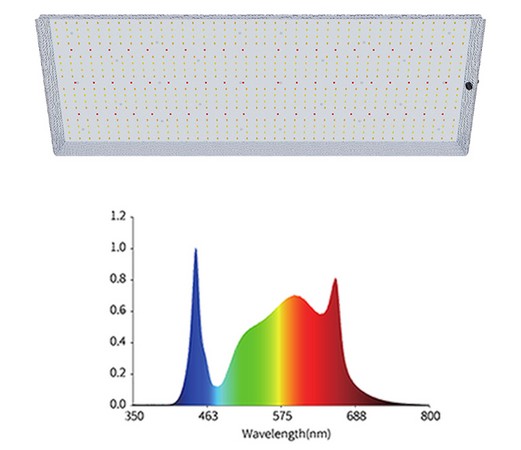LED grow lights, which have a spectrum that is best suited for photosynthesis, are very important. Good quality LED grow lights offer a wide range of spectrums, so there's no need to worry about only having one type of wavelength at your disposal.
What is a grow light spectrum?
The energy emitted from the sun is in the form of radiation. The ozone layer filters this radiation and allows only wavelengths from 300-1100 nm to reach plants. This light is referred to as light spectrum, visible spectrum, or color spectrum. Its range is between 380-750 nm approximately. A spectrum is a band of numerous colors namely red, orange, yellow, green, blue, indigo and violet.
While there is no one perfect spectrum for all plants, it's important to understand that you can't just get any type of LED grow light and expect it to work. As some basic rules, blue LED lights are better for flowering while red-orange LEDs are better for vegetative growth. This means that if you want your plant to flower quickly, then get a light with more blue in its spectrum. However, if your goal is increased leafy growth or faster germination time then opt for a spectrogram with more red/orange bulbs.
Why LED grow lights?
LED grow lights are a popular choice for indoor and greenhouse farmers because they provide light with an energy-efficient, low heat waste. These lights also promote growth in plants by emitting full-spectrum lighting that is different from the traditional HPS lamps which produce more red than blue spectrums.
In addition to providing this beneficial light source, LEDs usually have an extended lifespan when compared to other types of bulbs. This gives growers greater flexibility as well as profit margins due to it being easier on their budget!
Should I use different light spectrum for different plants?
By combining blue light and red, plants are able to absorb more of the necessary chlorophyll pigments. This is why LEDs have become so advanced in recent years; by selecting specific quantities for both colors, they can help regulate plant growth through leaf size and flowering time. Many indoor growers also experiment with far-red spectrum as an indirect way to simulate shading from direct sunlight by sending it lower down on a canopy - like salad leaf farmers do when production slows due to intense sun exposure.
Indoor growers have the ability to control the light spectrum, one of these is far-red. Plants associate this with shading from direct sunlight which would happen lower down their canopy causing leaf and stem stretching as they reach out for more sun. This means when used strategically bigger leaves can be produced without unnecessary stress on plants that are in need of a change or just want some extra nutrients because there's no specific LED grow light made specifically for any particular plant, but by using ratios between red and blue you are able to maximize growth rates while maximizing photosynthesis as well.
For more information:
Growealth
marketing@growealth.com
www.growealth.com
"light" - Google News
August 17, 2021 at 07:54PM
https://ift.tt/3xVbgl2
Why does LED grow light color spectrum affect plants' growth? - hortidaily.com
"light" - Google News
https://ift.tt/2Wm8QLw
https://ift.tt/2Stbv5k
Bagikan Berita Ini
















0 Response to "Why does LED grow light color spectrum affect plants' growth? - hortidaily.com"
Post a Comment